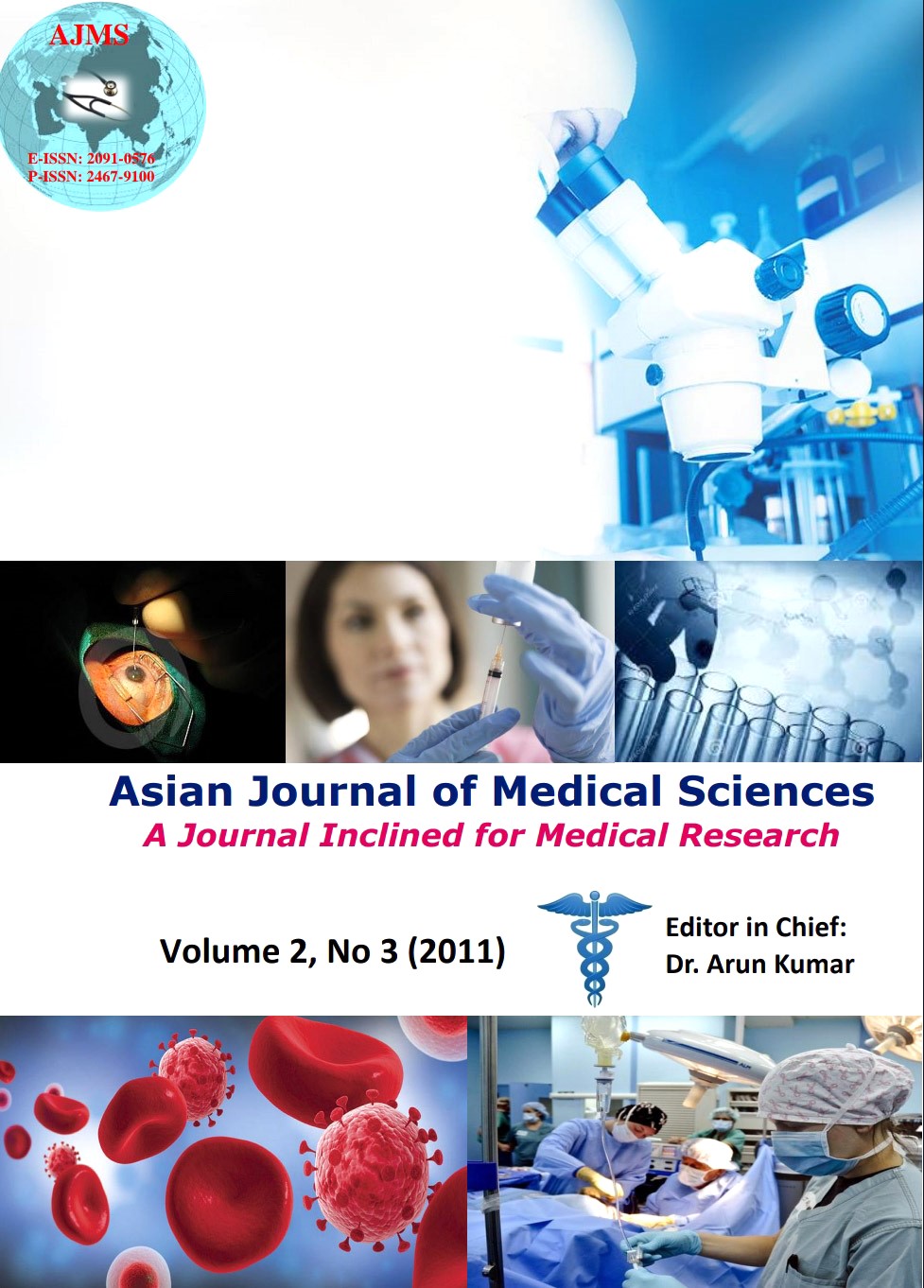Evaluation of Pharmacology Didactic Lectures for Graduating Nursing Students: a Questionnaire Based Comparative Study Between Two Colleges in Nepal
Keywords:
Education, critical appraisal, feedback, nursing, pharmacologyAbstract
Objective: This study was set to obtain the critical appraisal of the graduating nursing students on pharmacology lectures and to compare the students’ view on teaching effectiveness and pharmacology course content at two different colleges, Kathmandu Medical College (KMC) and B P Koirala Institute of Health Sciences (BPKIHS), in Nepal.
Materials and methods: Forty B Sc Nursing students studying at two colleges of twenty each at the end of the first year were enrolled in this study. Structured teaching evaluation questionnaire containing 13 close-ended items and two open-ended questions was used. Three items were intended to evaluate pharmacology course content and other ten items to evaluate the teaching effectiveness. Open-ended questions were incorporated to collect the students frank and open views that provided flexibility and reliability. Students were instructed not to disclose their identity in any form so as to obtain genuine, valid and frank responses. Yates corrected Chi square test was applied whenever necessary and P value considered significant at less than or equal to 0.05.
Results: On majority of the students’ (60-90%) view existing pharmacology course content was ‘just right and useful’ and no significant difference between two college students’ view exists. Majority of students both at Kathmandu Medical College (KMC) and B P Koirala Institute of Health Sciences (BPKIHS) found the ‘clarity of voice (KMC-55%, BPKIHS-70%) and audibility (KMC-70%, BPKIHS-80%)’ to be ‘fair’. More students at KMC (60%) found the ‘student’s participation’ during lecture than students at BPKIHS (35%). Thirty five percent of students at KMC felt that pace of the lectures was ‘about right’ whereas 100% BPKIHS students found the same and the difference was significant (P=0.00005). Almost all the students both at KMC (95%) and BPKIHS (100%) preferred the liquid crystal display (LCD) mode of presentation has been over head projector (OHP) or board and marker methods. Majority of the students at the both colleges opined that the number of lectures allotted to pharmacology is less. Additionally, from students’ perspective, more student-teacher interactions, class assessments and explanation of the subject matter with clinical correlation are necessary for better understanding of the subject.
Conclusion: No major significant differences except pace of the lecture exist in the teaching methodology and pharmacology course content between the two colleges though there are insignificant differences. Students at the both colleges felt that course content of the pharmacology should be increased with more weight to the subject. As per students’ responses, student-teacher interactions during lectures along with more explanations with clinical correlation and more frequent assessment may enhance the students’ learning process and keep up their expectations. Moreover, clarity of voice and audibility need to be improved on teacher’s part during the lectures.
DOI: http://dx.doi.org/10.3126/ajms.v2i3.4530
Asian Journal of Medical Sciences 2 (2011) 159-163
Downloads
Downloads
Published
How to Cite
Issue
Section
License
Authors who publish with this journal agree to the following terms:
- The journal holds copyright and publishes the work under a Creative Commons CC-BY-NC license that permits use, distribution and reprduction in any medium, provided the original work is properly cited and is not used for commercial purposes. The journal should be recognised as the original publisher of this work.
- Authors are able to enter into separate, additional contractual arrangements for the non-exclusive distribution of the journal's published version of the work (e.g., post it to an institutional repository or publish it in a book), with an acknowledgement of its initial publication in this journal.
- Authors are permitted and encouraged to post their work online (e.g., in institutional repositories or on their website) prior to and during the submission process, as it can lead to productive exchanges, as well as earlier and greater citation of published work (See The Effect of Open Access).




